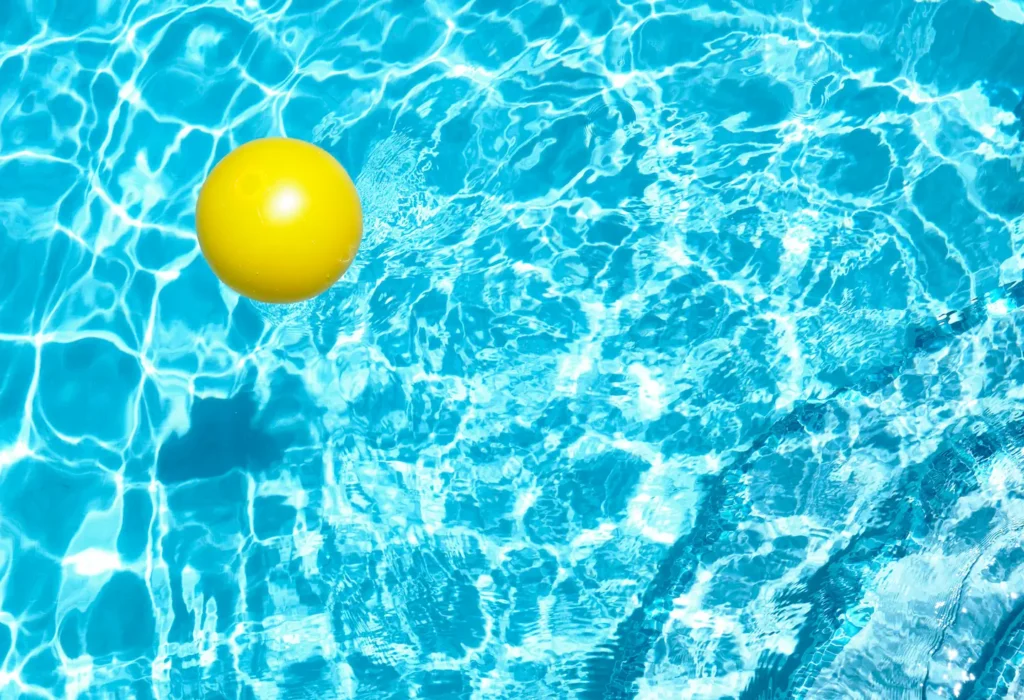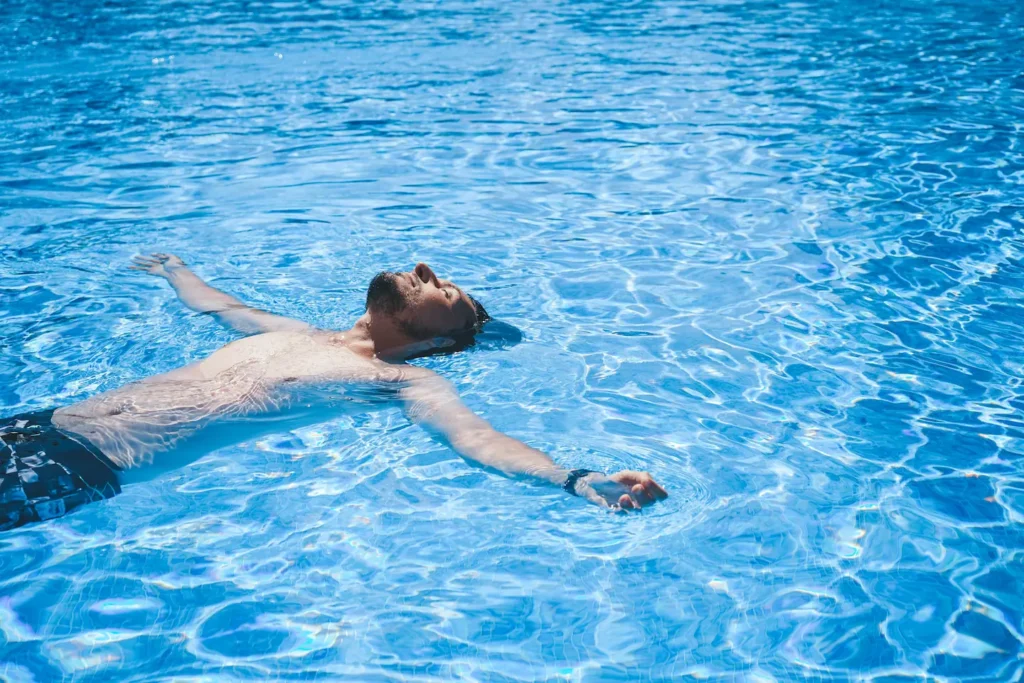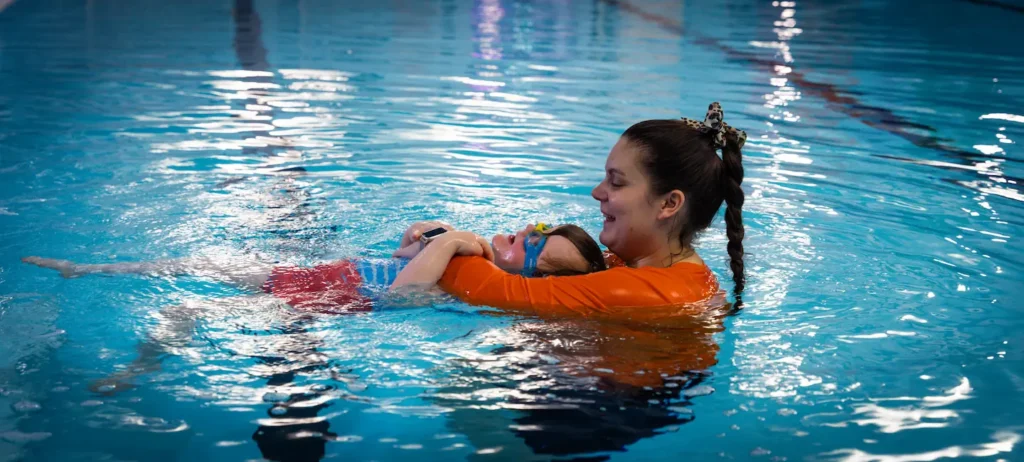Many people mistakenly believe that floating in water is a special skill or requires a certain body type. This simply isn’t true! The idea of letting your body relax and trust the water can feel unusual, but it’s a skill anyone can learn. Understanding how to float is all about science, not special abilities. In this blog post, I will teach you exactly how to float in 5 simple steps!
Why learning to float is important
Globally, a staggering 235,600 lives are tragically lost to drowning each year. Alarmingly, 40% of these drowning deaths in 2022 involved people who never intended to be in the water – maybe they were walking by a pool or got swept away by unexpected waves. This statistic highlights a crucial point: even if you’re not a swimmer, learning to float can be a lifesaver.
If you unexpectedly fall into the water, floating allows you to control your breathing, conserve energy, and stay calm while waiting for help or deciding how to get to safety. Panic is one of the biggest dangers in water emergencies. When we panic, we make poor decisions and our bodies use up energy quickly. Floating provides a chance to relax, take stock of the situation, and regain control. It’s like a reset button in a scary situation.
Understanding the science behind floating
Imagine you have a ball of beach ball material and a metal ball. The beach ball material is much less dense than the metal, meaning it has less mass packed into the same amount of space. If you put both in a pool, the beach ball will float because the water pushes up on it with a force greater than the ball’s weight pulling it down.


Our bodies are similar. We are mostly water ourselves; about 60% water, with the remaining 40% being mostly less dense materials like bones, muscles, and fat. Overall, our body density is slightly less than water’s density. So, the water pushes up on us, creating a force called buoyancy, that counteracts our weight and allows us to float, especially when we relax and spread out our bodies in the water.
How to Float in Water
Start in a shallow area of the pool where you can stand when needed. This will help with relaxation and confidence.
1. Relax
The biggest obstacle to floating is often tension. Start in a shallow, calm area of the pool. Take a few deep breaths, focusing on releasing tightness in your shoulders, neck, and legs. Think of yourself as loose and light.
2. Stretch your arms and legs
Spreading your arms and legs slightly outwards will offer extra surface area for balance and stability. Let your arms float outwards from your sides and keep your fingers spread slightly to add a little “catch” against the water.
3. Look up to the sky
Tilt your head back until your ears are submerged in the water and lift your chin slightly. Focusing on the sky helps ease tension and keeps your airway above water.
4. Push your tummy up
Push your belly button towards the sky. This helps keep your hips and legs aligned with your upper body for better balance. Ensure your back and core are engaged, keeping your body in a mostly straight line.
How to float in deep water
If you can float in shallow water, you absolutely have the potential to float in deep water too! The science behind floating doesn’t change with the depth. Remember, your body’s ability to float depends on its density compared to the water. Whether you’re in a few feet of water or the deep end, that comparison stays the same. Mastering relaxation, finding your balance, and filling your lungs with air will make you float, regardless of how much water is below you.
The biggest difference in the deep end is often psychological, not physical. Overcoming fear and focusing on your technique lets you unlock the same floating ability you’ve already practiced in the shallow end. Floating with a friend or instructor provides reassurance and a helping hand if needed.
Why can’t I float in water
While everyone has the potential to float with the right technique and practice, some people might initially find it more challenging. Fear can cause us to tense our bodies, making it difficult to relax and find the proper floating position. Addressing anxiety is key. Buoyancy belts, pool noodles, and vests provide extra support and make the feeling of floating more accessible. These are great tools to build confidence and refine technique.
Small adjustments in body position can make a big difference. It’s essential to ensure learners are following the correct steps and refine their technique as needed. A swim instructor can analyse individual needs and provide tailored tips for overcoming specific challenges with floating. Remember, everyone learns at their own pace; consistency and practice are key.
Additional tips
Flotation devices like armbands, vests, pool noodles, and kickboards provide extra buoyancy. This takes some of the pressure off while learning to balance and relax, which are key for successful floating. Specific aids isolate certain skills. A noodle under the arms supports your upper body during back floats, while a kickboard lets you concentrate on leg movements and body positioning.
Warm water promotes relaxation in our muscles and reduces tension – a huge obstacle to floating. It helps improve circulation, which can combat feelings of heaviness and promote the overall sensation of lightness needed for floating. Whereas cold water can make us tense up instinctively, working against your floating efforts.

